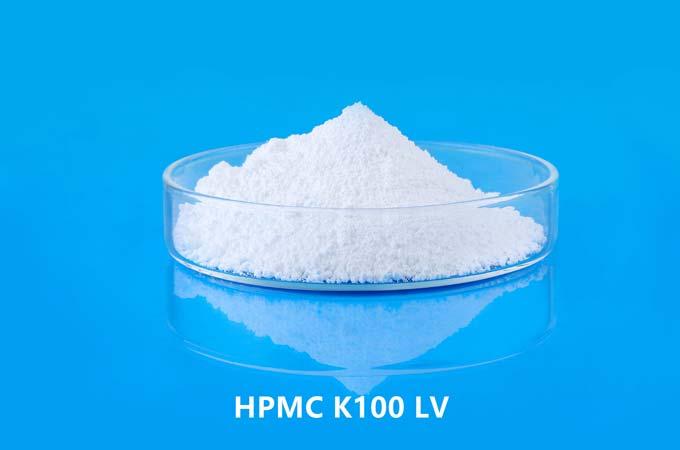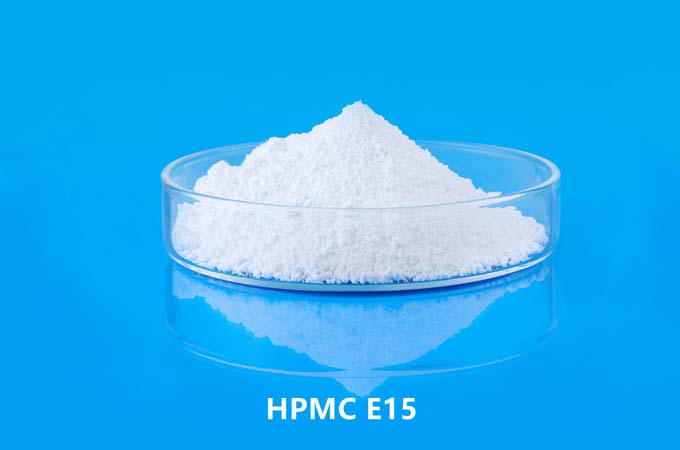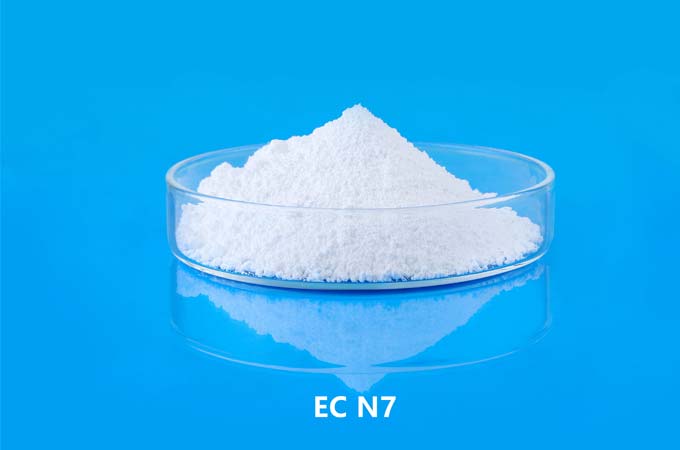Hydroxypropyl methylcellulose, also known as hypromellose and cellulose hydroxypropyl methyl ether, is made from high-purity cotton cellulose through special etherification under alkaline conditions.
main meaning
1. Construction industry: used as a water retaining agent and retardant for cement mortar to make the mortar pumpable. Used as a binder in plaster, plaster, putty or other building materials to improve spreadability and extend working time. It is used as a paste for ceramic tiles, marble, and plastic decoration. As a paste enhancer, it can also reduce the amount of cement. The water retention of HPMC can prevent the slurry from cracking due to too fast drying after construction and enhance the strength after hardening.
2. Ceramic manufacturing: widely used as a binder in the manufacturing of ceramic products.
3. Coating industry: As a thickener, dispersant and stabilizer in the coating industry, it has good compatibility in water or organic solvents. As a paint stripper.
4. Ink printing: As a thickener, dispersant and stabilizer in the ink industry, it has good compatibility in water or organic solvents.
5. Plastic: used as release agent, softener, lubricant, etc.
6. Polyvinyl chloride: used as a dispersant in the production of polyvinyl chloride and the main additive for the preparation of PVC by suspension polymerization.
7. Others: This product is also widely used in leather, paper products, fruit and vegetable preservation, textile and other industries.
8. Pharmaceutical industry: coating materials; film materials; rate-controlling polymer materials for sustained-release preparations; stabilizers; suspending agents; tablet adhesives; thickeners
Soluble in water and most polar C and appropriate proportions of ethanol/water, propanol/water, dichloroethane, etc., insoluble in ether, acetone, absolute ethanol, and swells into a clear or slightly turbid colloid in cold water. The aqueous solution has surface activity, high transparency and stable performance. HPMC has thermal gelling properties. The aqueous solution of this product is heated to form a gel and precipitates, which dissolves upon cooling. Products of different specifications have different gel temperatures. Solubility varies with viscosity. The lower the viscosity, the greater the solubility. HPMCs of different specifications have different performances. The solubility of HPMC in water is not affected by pH value. Particle size: 100 mesh pass rate is greater than 98.5%. Bulk density: 0.25-0.70g/ (usually around 0.4g/), specific gravity 1.26-1.31. Discoloration temperature: 180-200℃, carbonization temperature: 280-300℃. The methoxy group value is 19.0% to 30.0%, and the hydroxypropyl group value is 4% to 12%. Viscosity (22℃, 2%) 5~200000mPa.s. Gel temperature (0.2%) 50-90°C. HPMC has the characteristics of thickening ability, salt discharge ability, pH stability, water retention, dimensional stability, excellent film-forming properties, and wide range of enzyme resistance, dispersion and adhesion.
chemical properties
1. Appearance: white or off-white powder.
2. Particle size; the pass rate of 100 mesh is greater than 98.5%; the pass rate of 80 mesh is 100%. The special specification particle size is 40-60 mesh.
3. Carbonization temperature: 280-300℃
Hydroxypropylmethylcellulose
4. Apparent density: 0.25-0.70g/cm3 (generally around 0.5g/cm3), specific gravity 1.26-1.31.
5. Discoloration temperature: 190-200℃
6. Surface tension: 2% aqueous solution is 42-56dyn/cm.
7. Solubility: Soluble in water and some solvents in appropriate proportions, such as ethanol/water, propanol/water, etc. Aqueous solutions are surface active. High transparency and stable performance. Products of different specifications have different gel temperatures and solubility changes with viscosity. The lower the viscosity, the greater the solubility. HPMCs of different specifications have different performances. The solubility of HPMC in water is not affected by pH value.
8. As the methoxy group content decreases, the gel point increases, the water solubility decreases, and the surface activity of HPMC decreases.
9. HPMC also has the characteristics of thickening ability, salt tolerance, low ash powder, pH stability, water retention, dimensional stability, excellent film-forming properties, and wide range of enzyme resistance, dispersion and adhesion.
dissolution method
1. All models can be dry-mixed and added to the material;
2. When it needs to be added directly to a normal temperature aqueous solution, it is best to use the cold water dispersion type. After adding, it usually takes 10-90 minutes to thicken;
3. Ordinary models can be dissolved in the following ways: first stir and disperse with hot water, then add cold water, stir and cool;
4. If agglomeration or wrapping occurs during dissolution, it is caused by insufficient stirring or direct addition of ordinary models to cold water. At this point, stir quickly.
5. If bubbles are generated during dissolution, they can be left for 2-12 hours (the specific time depends on the consistency of the solution) or removed by vacuuming, pressurizing, etc., or adding an appropriate amount of defoaming agent.
resolve resolution
1. Treat the refined cotton cellulose with an alkali solution at 35-40°C for half an hour, press and crush the cellulose, and age it appropriately at 35°C so that the average degree of polymerization of the obtained alkali fiber is within the required range. Put the alkali fiber into the etherification kettle, add propylene oxide and methyl chloride in sequence, and etherify at 50-80°C for 5 hours. The maximum pressure is about 1.8MPa. Then add an appropriate amount of hydrochloric acid and oxalic acid to 90°C hot water to wash the material to expand the volume. Dehydrate using a centrifuge. Wash with water until neutral. When the moisture content of the material is less than 60%, use 130°C hot air to dry it to less than 5%.
Test Methods
Method name: Hypromellose---Determination of hydroxypropoxyl group---Determination of hydroxypropoxyl group
Scope of application: This method uses the hydroxypropoxy group determination method to determine the hydroxypropoxy group content in hypromellose.
This method is suitable for hypromellose.
Method principle: Calculate the hydroxypropoxy group content according to the hydroxypropoxy group determination method.
Reagents: 1. 30% (g/g) chromium trioxide solution
2. Sodium hydroxide titrant (0.02mol/L)
3. Phenolphthalein indicator solution
4. Sodium bicarbonate
5. Dilute sulfuric acid
6. Potassium iodide
7. Sodium thiosulfate titrant (0.02mol/L)
8. Starch indicator liquid
Sample Preparation:
1.Sodium hydroxide titration solution (0.02mol/L)
Preparation: Take 5.6mL of clear saturated sodium hydroxide solution and add newly boiled cold water to 1000mL.
Calibration: Take about 6g of the reference potassium hydrogen phthalate dried to constant weight at 105°C, weigh it accurately, add 50mL of newly boiled cold water, and shake until it is dissolved as much as possible; add 2 drops of phenolphthalein indicator solution, and use this titrant. When the end point is approached, the potassium hydrogen phthalate should be completely dissolved and the solution should be titrated to a pink color. Each 1mL of sodium hydroxide titrant (1mol/L) is equivalent to 20.42mg of potassium hydrogen phthalate. Calculate the concentration of the solution based on the consumption of the solution and the amount of potassium hydrogen phthalate used. Dilute quantitatively 5 times to make the concentration 0.02mol/L.
Storage: Put into polyethylene plastic bottles, seal and store; There are 2 holes on the stopper, insert a glass tube into each hole.
2. Phenolphthalein indicator solution
Take 1g of phenolphthalein and add 100mL of ethanol to dissolve it
3. Sodium thiosulfate titrant (0.02mol/L)
Preparation: Take 26g of sodium thiosulfate and 0.20g of anhydrous sodium carbonate, add an appropriate amount of newly boiled cold water to dissolve to 1000mL, shake well, let it stand for 1 month and then filter.
Calibration: Take about 0.15g of the reference potassium dichromate of constant weight dried at 120°C, weigh it accurately, place it in an iodine bottle, add 50mL of water to dissolve, add 2.0g of potassium iodide, shake gently, add 40mL of dilute sulfuric acid, and shake well , sealed; After protecting from light for 10 minutes, add 250 mL water to dilute. When the titration is close to the end point, add 3 mL starch indicator solution, and continue titration until the blue color disappears, the green color becomes brighter, and the titration result is blank. Try to correct it. Each 1mL of sodium thiosulfate (0.1mol/L) is equivalent to 4.903g of potassium dichromate. Calculate the concentration of the solution based on the consumption of the solution and the amount of potassium dichromate used. Dilute quantitatively 5 times to make the concentration 0.02mol/L.
If the room temperature is higher than 25°C, the reaction solution and dilution water should be cooled to about 20°C.
4. Starch indicator solution
Take 0.5 g of soluble starch, add 5 ml of water, mix well, slowly pour into 100 ml of boiling water, stir while adding, continue to cook for 2 minutes, let cool, and pour out the supernatant. This solution should work in new systems.
Operation steps: Take 0.1g of this product, weigh it accurately, place it in distillation flask D, and add 10mL of 30% (g/g) cadmium trichloride solution. Inject water into the steam generating pipe B to the joint and connect the distillation device. Immerse B and D in the oil bath (
 English
English 日本語
日本語 français
français Deutsch
Deutsch Español
Español italiano
italiano русский
русский português
português العربية
العربية Türkçe
Türkçe Nederland
Nederland



